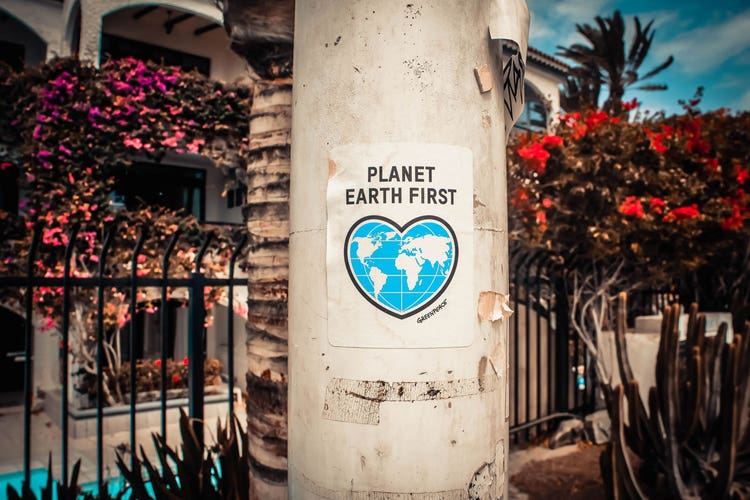The Last Straw

When you grind out the miles on a regular basis, food is fuel. I’ve concocted a smoothie to replenish what I’ve burned off in a personal training session or a couple hours of cycling, swimming, running, suspension strap work and pull-ups. My family—and now my coworkers—call it Green Sludge, and there’s nothing like it that’s available in a plastic bottle (or any bottle) in the grocery store cooler.
Now, I consider myself someone who eats well—I even try to eat clean. So when the 24Life team asked me to step up to a dietary challenge for April, I thought, “Easy.” When I received the assignment, it was not quite what I expected: Go on a plastic diet.
Still, I assumed minimally processed foods use less packaging. I’ve subscribed to the principles of reduce, reuse and recycle for years. How difficult could it be?
Then I learned that there is a Texas-sized island of plastic debris floating between California and Hawaii. That’s not a casual analogy for “big.” The flotilla of waste literally is the size of the state I call home. That was my clue that this challenge might be greater than I thought.
Elimination
Just like any other diet regimen, the 24Life team asked me to keep a log—in this case, noting the plastic I used (and hopefully, eliminated). My 14-year-old daughter supervised—and I have to say, she’s a tough coach.
I was so confident in anticipation of success at “going off” of plastic that I started my elimination “diet” and my plastic log at the same time. I quickly discovered that even clean eaters use more plastic than they might think. Pre-washed, organic greens come in handy plastic clamshells. Organic, pasture-raised and grass-fed meats are packaged in plastic and Styrofoam. That gallon jug of organic milk is plastic.
Fortunately, many communities offer alternatives. There’s probably a butcher shop where you can purchase meats—and you’ll take away paper-wrapped items. (In communities with food scrap recycling, that paper can go in the bin.) More dairies are offering bottled milk delivery. And if you’ve never given a second look to the grocery aisle with bins of nuts, seeds, grains and snacks, it’s time to bring your own container and explore.
Some sneaky hiding places
I found that traveling requires extra vigilance when you’re trying to eliminate plastic. Did you remember your travel mug? Great! Here are some other places that plastic will pop up.
- Coffee stoppers: those handy little plugs that prevent spills on the gangway.
- Plastic utensils: individually packaged in—you guessed it—plastic sleeves.
- Straws: I haven’t used a straw since I tackled a milkshake, as a kid. And yet, that plastic tube will show up in a glass of water or iced tea unless you ask your restaurant server to hold it.
Another source of plastic that I hadn’t considered is clothing. We shed plastic microfibers from our fleece jackets and performance shirts and pants—and these fibers turn up in measurable quantities in our water.
Recommendations
There are many ways to tackle the plastic challenge. No matter where you start, good for you! Here are some takeaways from my diet that you might find helpful.
- Log your plastic use for a week before you start your elimination “diet.” The Earth Day Network’s Plastic Pollution Primer and Toolkit includes a calculator listing common plastic items we use and throw away, which can help you figure out what to track—and tally how big your annual plastic “footprint” is.
- Use your coach. It’s challenging to give up convenience in our incredibly busy days, and it can be difficult to make the kids follow your example. When you flip that script and ask them to coach you, they’ll most likely step up to the task with tremendous enthusiasm—and encourage and even model the behavior you’re striving for.
- Learn to refuse, or substitute. Need a straw? Now you can purchase metal or glass reusable straws—and old-fashioned paper straws are still available, too.
Finally, test yourself just as you might on an elimination diet: Add some plastic back into your routine. You might find that you’ve developed an aversion or at least a sensitivity (on principle) and make some of your changes permanent.
Photo credit: aplaceforcreation, Unsplash